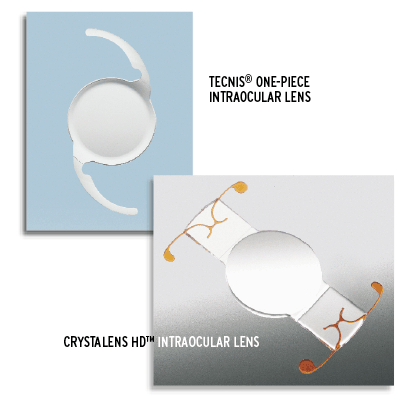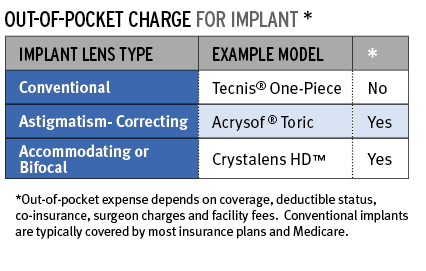New Implant Options for Eye Surgery
Thomas Harvey
Ophthalmology
Chippewa Valley Eye Clinic
Eau Claire
Just a few years ago, patients ready for cataract surgery had little say as to what went inside their eye. Times have changed, a lot. A cataract is the clouding of the natural lens in one’s eye. Modern cataract surgery uses high frequency ultrasound and vacuum suction to remove this cloudy material and create space for an artificial implant lens. By knowing which implant options exist, cataract patients can now make an informed decision about their future vision and need for glasses after surgery.
Most implant lenses are made of acrylic or silicone. They have some flexibility that allows them to be rolled and fit through a small incision. Once inside the eye, the implants unfold and rest where the natural lens once was.
It is important for patients to have some understanding of all implant options. While not all implants are great for every person, it is a good idea to have a discussion about options before surgery.
There are three main types of implant lenses available for cataract surgery:

Conventional Implants
The tried-and-true single power implants have been around for decades and focus light at one distance. For patients that do not mind wearing glasses after surgery, these lenses work well. Side effects of conventional implants are few, but mild glare or peripheral shadows can occasionally occur under some lighting conditions.
Astigmatism-Correcting Implants
In addition to correcting nearsightedness or farsightedness, these lenses compensate for corneas that are not uniformly round. Astigmatic (i.e warped) corneas focus light unevenly, thereby necessitating optical correction for best vision. By compensating for corneal astigmatism, these implants provide the best spectacle-free vision for one point of focus, which is usually in the distance. Some part-time glasses use is common. Side effects are the same as in conventional implants.
Accommodating or Bifocal Implants
When maximum independence from glasses is preferred, implants that correct distance, intermediate and near vision are often an excellent option. A lack of astigmatism is important for optimal performance of these implants. Studies have shown that glasses are needed less than 20% of the time with this group of implants. Side effects include halos around lights and decreased contrast sensitivity with bifocal implants. In patients at higher risk for macular degeneration or glaucoma, bifocal lenses may be contraindicated.

To learn more about cataract implant options, a free online resource at www.iolcounselor.com/inet/index.htm may be helpful.
~ For information or to schedule an appointment with Dr. Harvey, Chippewa Valley Eye Clinic, call 715.834.8471 or visit www.cv-eye.com. Dr. Harvey sees patients in Eau Claire, Menomonie and Neillsville.




